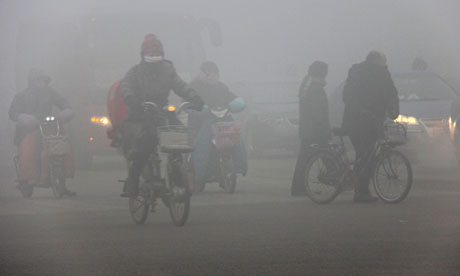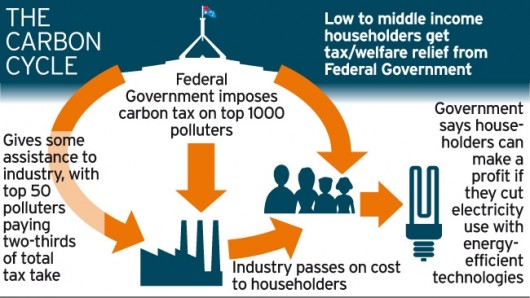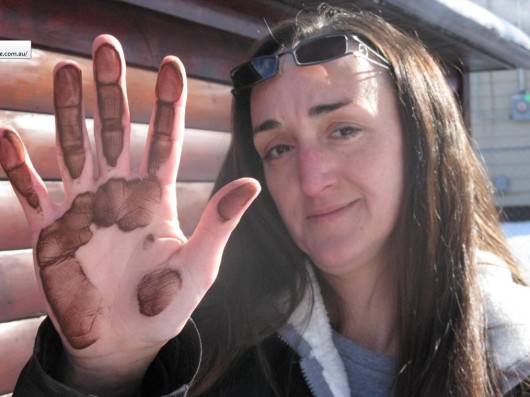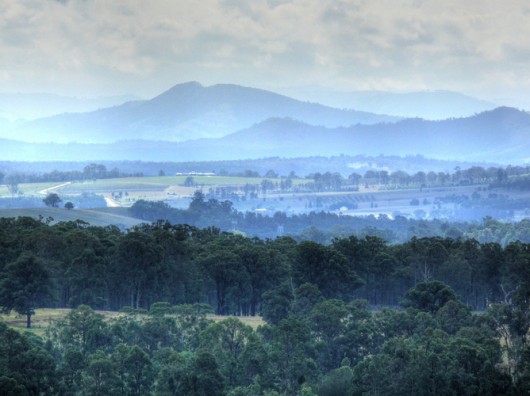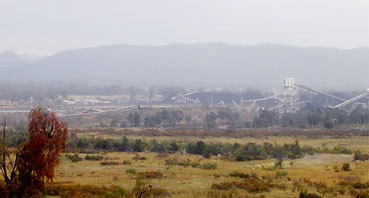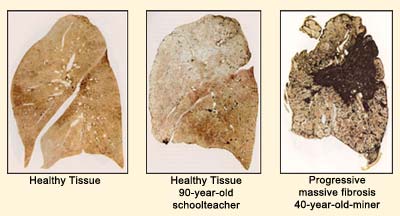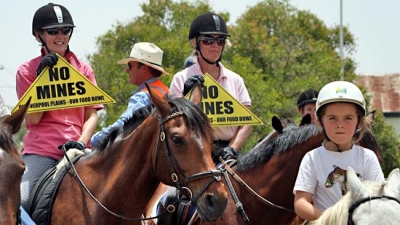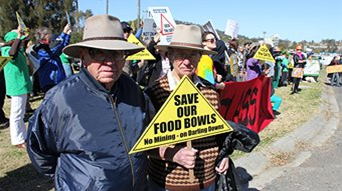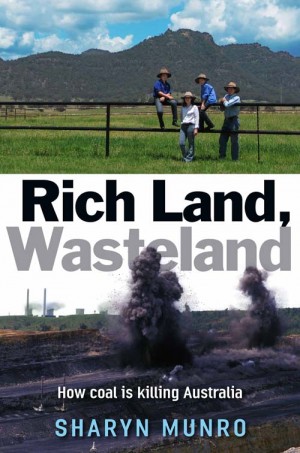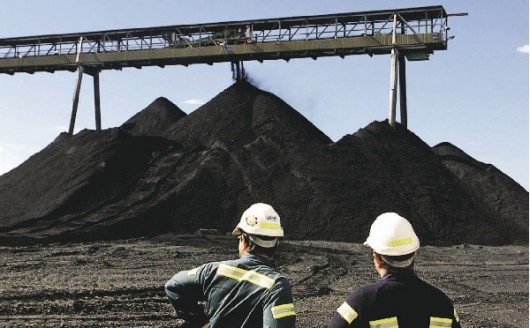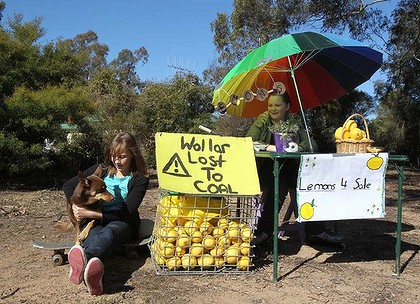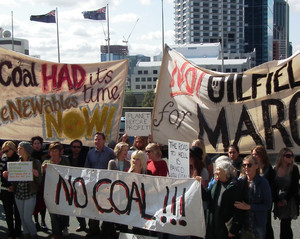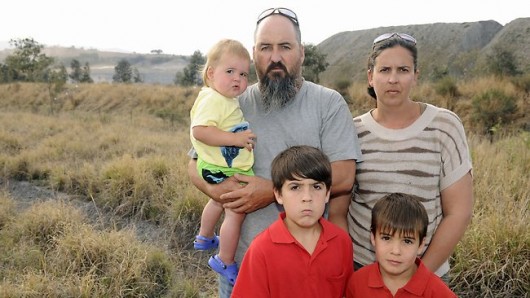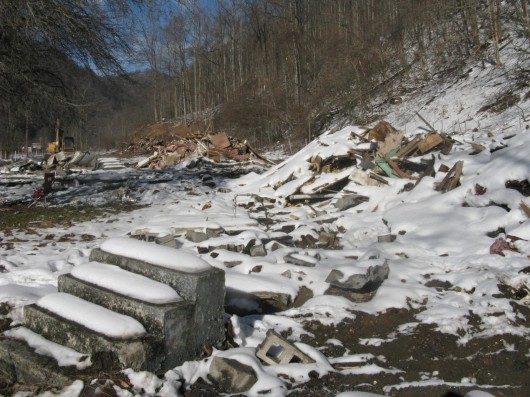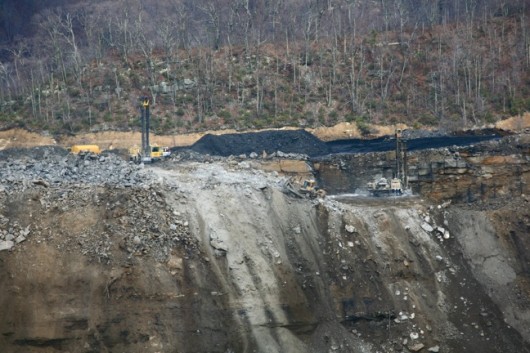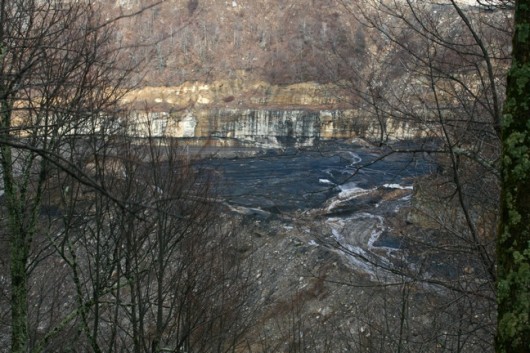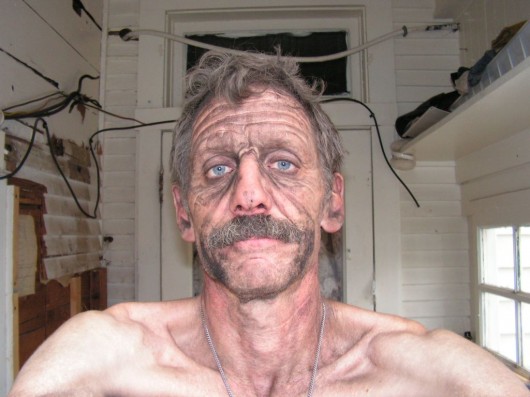Pollution Pushing makes carbon taxing a farce
Tuesday, January 15th, 2013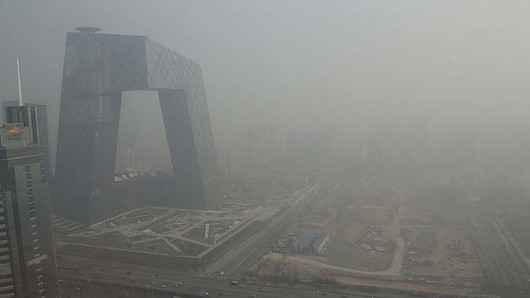 China Central Television (CCTV) building in Beijing in a gloomy coal fired smog
An all too regular and deadly occurrence for Beijing locals.
[Photo: Reuters]
China Central Television (CCTV) building in Beijing in a gloomy coal fired smog
An all too regular and deadly occurrence for Beijing locals.
[Photo: Reuters]
.
China’s urban air pollution is serious, lethal and chronic.
It is a direct consequence of excessive dependent use of coal-fired power by industry, exponential growth in petrol/diesel vehicle use. In the capital Beijing’s case, Beijing’s geographic location at the northern tip of the North China Plain bounded by the Xishan and Yanshan mountain ranges, places it in natural valley head air trap.
Under frequent meterological conditions, ambient air around Beijing has nowhere to go, and so lingers and becomes trapped for many days at a time.
But introduce massive industrial and transport pollution with this natural and known lack of breeze, unable to fan away and dissipate local carbon monoxide pollution somewhere else, and so Beijing’s air becomes suffocatingly deadly smog.
So Beijing is not a place tolerant of industrialised pollution.
Beijing does not have to aspire to 1980s Los Angeles smog infamy, yet blind industrialism has slowly fueled a degradation of this ancient cultural city into a replica Los Angeles with all the ugly economic waste negativity.
In the past three days, this is just what has again besetted Beijing – trapped ambient air pumped with massive local Beijing industry and transport carbon monoxide, has grabbing again world attention and empathetic concern for Beijing locals trying to breathe.
As part of an emergency response to ease seriously dangerous air pollution the government of China has ordered government vehicles off Beijing roads.
<<Beijing hospitals have been inundated with patients complaining of heart and respiratory ailments and the website of the capital’s environmental monitoring centre crashed. Hyundai Motor’s venture in Beijing suspended production for a day to help ease the pollution, the official Xinhua news agency reported.
Measurements of PM2.5, fine airborne particulates that pose the severest health risks, rose as high as 993 micrograms per cubic metre in Beijing on January 12, compared with World Health Organisation guidelines of no more than 25.
.
‘Beijing’s Air Quality Index was as high as 500 at 6am on Monday.’
.
Air Quality Index (AQI) |
PM2.5
|
Good (0-50) |
None |
Moderate (51-100) |
Unusually sensitive people should consider reducing prolonged or heavy exertion. |
Unhealthy for Sensitive Groups (101-150) |
People with heart or lung disease, older adults, and children should reduce prolonged or heavy exertion. |
| Unhealthy (151-200) |
People with heart or lung disease, older adults, and children should avoid prolonged or heavy exertion; everyone else should reduce prolonged or heavy exertion. |
| Very Unhealthy (201-300) |
People with heart or lung disease, older adults, and children should avoid all physical activity outdoors. Everyone else should avoid prolonged or heavy exertion. |
| Hazardous (301-500) |
Everyone should avoid all physical activity outdoors; people with heart or lung disease, older adults, and children should remain indoors and keep activity levels low. |
Long-term exposure to fine particulates raises the risk of cardiovascular and respiratory diseases as well as lung cancer, according to the World Health Organisation (^WHO).
”Pollution levels this high are extreme even for Beijing,” the Beijing head of ^Greenpeace East Asia climate and energy campaign, Li Yan, said.
”Although the government has announced efforts to cut pollution, the problem is regional and to fix Beijing’s problem, we also have to fix industrial pollution in neighbouring regions like Hebei and Tianjin and even as far as Inner Mongolia.”
.
Exposure to PM2.5 helped cause a combined 8,572 premature deaths in Beijing, Shanghai, Guangzhou and Xi’an in 2012, and led to economic losses of $US1.08 billion ($1.02 billion), according to estimates in a study by Greenpeace and Peking University’s school of public health published on December 18.
.
”The number of people coming into our emergency room suffering heart attacks has roughly doubled since Friday when the air pollution became really severe,” the deputy head of cardiology at Peking University People’s Hospital, Ding Rongjing, said.
China, which the ^World Bank estimates has 16 of the world’s 20 most-polluted cities, is the largest emitter of greenhouse gases.
On Sunday, Beijing began its emergency-response plan to the pollution, which included ordering government vehicles off the roads to cut usage by 30%, according to Xinhua, citing the director of the city’s environmental protection bureau’s air quality department, Yu Jianhua.
The plan also calls for construction sites to limit activity that creates large amounts of dust and asks industrial companies to reduce emissions.
Residents are advised to stay indoors and use public transport if they need to go out, while primary schools should reduce outdoor activities, Xinhua said.>>
.
[Source: ‘Beijing under cloud as air pollution threat sparks emergency response’, by Daryl Loo and Feiwen Rong, Bloomberg, 20130115, ^http://www.smh.com.au/environment/beijing-under-cloud-as-air-pollution-threat-sparks-emergency-response-20130114-2cppl.html].
[Ed: Problem is that Australia’s coal exports, while driving China’s prized economic boom, at the same time are poisoning urbanised Chinese with coal-fired carbon monoxide.
The progressive narrowness harks to Dickensian London:
“This is a London particular . . . A fog, miss.”]
.
.
Australian Government Clean Energy Future..plan
.
<<..Outlines the existing policies already underway to address climate change and cut carbon pollution and introduces several critical new initiatives.
The plan has four pillars: a carbon price; renewable energy; energy efficiency; and action on land. The plan also details how the Government is supporting Australian households, businesses and communities to transition to a ‘clean energy future‘.>>
.
Foreword
.
<<The Australian Government has been advised by scientists that the world’s climate is changing and that there will be adverse effects on our nation if the trend of rising temperatures continues.
As a hot and dry continent, Australia has more to lose from climate change than all other developed countries. There are significant risks to our environment and our economy.
The clear scientific consensus is that human activity which releases carbon pollution into the atmosphere, mainly the use of fossil fuels, is risking dangerous climate change. This is why the Government has adopted a plan for a clean energy future for Australia.
The plan will cut pollution and drive investment helping to ensure Australia’s prosperity in the low pollution world of the future.
We will do this by introducing a carbon price into Australia’s economy. This will put a price tag on every tonne of carbon pollution released into the atmosphere by the country’s biggest polluters – around 500 businesses will be required to pay for their pollution under the carbon pricing mechanism.
The carbon price will create a financial incentive to reduce carbon pollution that will flow through our economy.
Households will be looked after with tax cuts, higher family payments and increases in pensions and benefits, to meet the costs passed through by some businesses.
The carbon price will change Australia’s electricity generation by encouraging investment in renewable energy like wind and solar power and the use of cleaner fuels like natural gas.
Treasury modelling shows the economy will continue to grow strongly with a carbon price. Extensive analysis by economists and independent institutions such as the Productivity Commission has demonstrated that market mechanisms like a carbon price or an emissions trading system are the cheapest ways of reducing pollution.
The Government is committed to supporting jobs as the economy is transformed. That is why we will support jobs throughout manufacturing, including in the steel and food processing industries, and in coal mining.
Australia has boundless renewable energy resources. We need to do more to take advantage of these resources.
The Government’s Renewable Energy Target, combined with the carbon price, will deliver around $20 billion of investment in renewable energy by 2020 in today’s dollars. It will mean that the equivalent of 20% of Australia’s electricity will come from renewable sources by 2020.
The Government will also drive this shift by creating a $10 billion commercially oriented Clean Energy Finance Corporation to invest in renewable energy and innovative technologies to cut pollution. The world is moving and economies which do not start cleaning up now will fall behind.
Australia has spent the last decade working out that putting a price on carbon pollution is the cheapest way to tackle climate change. The Government’s plan for a clean energy future has been negotiated by the Multi-Party Climate Change Committee. The Committee has agreed to a comprehensive set of measures to help fight climate change.
The Government is separately investing in further measures to ease the economic transition to a carbon price, as well as taking additional steps to reduce carbon pollution… Carbon pricing and moving towards a clean energy future is a reform we need to keep our economy competitive, to protect our environment and to do the right thing for our children and future generations.>>
.
[Source: Australian Government, ^http://www.cleanenergyfuture.gov.au/clean-energy-future/our-plan/].
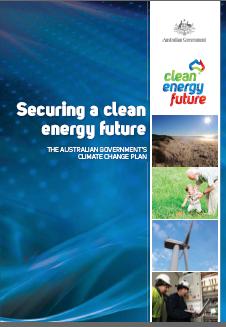 .
.
Read: >Australian Government’s Clean Energy Plan 2011 (158 pages, PDF, 3MB)
[Ed: Note: Due to this large file size, it may be quicker to click on the above link, then on your web browser select File, Save As… , then once downloaded, to access the saved PDF file]
.
Meanwhile, Australia’s coal exports to China continue unabated – in 2011, 13.7 million tonnes of metallurgical coal.
.
 One of the many of Australia’s working open cut coal mines, this one in the Hunter Valley
[Source: ^http://www.kateausburn.com/wp-content/uploads/2011/08/DSC052381.jpg
One of the many of Australia’s working open cut coal mines, this one in the Hunter Valley
[Source: ^http://www.kateausburn.com/wp-content/uploads/2011/08/DSC052381.jpg
.
Australia provides around 30% of the world coal trade, which still accounts for 40% of total world power generation.
In 2011, Australia was the world’s largest exporter of metallurgical coal and the second largest exporter of thermal coal. Australia is also the fourth largest producer, and has the fifth largest resources of black coal in the world.
.
[Ed: This makes Australia the prime pusher of greenhouse gas emissions on the planet.]
.
Australia’s accessible economic demonstrated resources are sufficient to sustain current black coal production rates for nearly 100 years.2 Brown coal accessible economic resources are estimated to be able to sustain current brown coal production for over 500 years.2
Coal is Australia’s largest energy export earner. In 2010–11, Australia exported 283 million tonnes (Mt) of metallurgical and thermal coal to world markets worth A$43.7 billion. Total coal (black, saleable) production in Australia in 2010–11 is estimated to have been 345 Mt. Over the medium term, total Australian metallurgical and thermal coal exports are forecast to increase by nearly 72 per cent: from 283 Mt in 2010–11 to 486 Mt, valued at $56.5 billion, in 2016–17.
The majority of Australia’s metallurgical and thermal coal exports were exported to the Asian region in 2011. This leading position has grown over many years of coal trade, based on the quality of Australian coal resources and the ability of Australian industry to meet and respond to the needs of its customers.
In 2011, Australia’s top four export markets for metallurgical coal were Japan (40.8 Mt), India (28.9 Mt), Republic of Korea (16.5 Mt) and China (13.7 Mt). Australia’s top four export markets for thermal coal were Japan (65.4 Mt), the Republic of Korea (29.5 Mt), China (19.9) and Taiwan (19.1 Mt).
Australian brown coal (lignite) production, mainly from the Latrobe Valley in Victoria, was 68.75 Mt in 2009–10. Brown coal is used domestically in electricity production. Coal, both black and brown, accounted for over 75 per cent of Australian electricity generation in 2009–10..
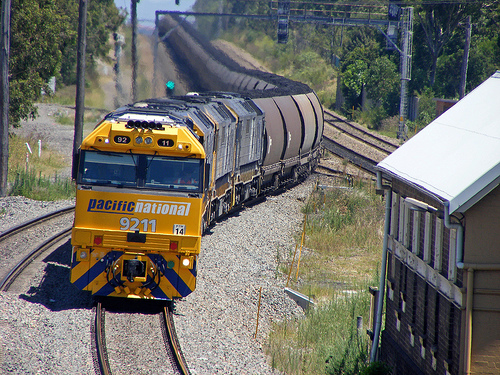 Hunter Valley Coal Train, loaded with black coal for export
Australia: committed to supporting jobs in coal mining, despite a domestic economy not allowed to fall behind, while climate change negotiations are for other government departments to distract the limelight.
Hunter Valley Coal Train, loaded with black coal for export
Australia: committed to supporting jobs in coal mining, despite a domestic economy not allowed to fall behind, while climate change negotiations are for other government departments to distract the limelight.
.
Australia’s Actual Coal Production
.
| Australian | 2008–09 | 2009–10 | 2010–11 |
| financial years | |||
| Production (Mt) | |||
| Thermal coal | 209.7 | 198.3 | 206.1 |
| Metallurgical coal | 130 | 163 | 146 |
| Total | 339.7 | 361.3 | 352.1 |
| Exports (Mt) | |||
| Thermal coal | 136.4 | 135 | 143.3 |
| Metallurgical coal | 125 | 157 | 140 |
| Total | 261.4 | 292 | 283.3 |
.
Australia’s Forecast Coal Production
.
| Australian Financial Years | 2011–12f | 2012–13f | 2013–14f | 2014–15f | 2015–16f | 2016–17f |
| Production (Million tonnes) | ||||||
| Thermal coal | 224.8 | 238.2 | 271.6 | 290.2 | 319 | 332.9 |
| Metallurgical coal | 152 | 169 | 180 | 195 | 213 | 222 |
| Total | 376.8 | 407.2 | 451.6 | 485.2 | 532 | 554.9 |
| Exports (Mt) | ||||||
| Thermal coal | 162.6 | 173.1 | 206.6 | 225.2 | 254 | 267.9 |
| Metallurgical coal | 148 | 166 | 176 | 191 | 209 | 218 |
| Total | 310.6 | 339.1 | 382.6 | 416.2 | 463 | 485.9 |
.
[Source: ‘Australia’s Coal Industry’, Australian Government, Department of Resources, Energy and Tourism, Resources > Mining > Australian mineral commodities > Australia’s coal industry, ^http://www.ret.gov.au/resources/mining/australian_mineral_commodities/coal/Pages/australia_coal_industry.aspx].
Ed:
So the Australian Government’s plan for coal exports is to nearly double capacity from 2008 to 2017, while at the same time..
.
“adopting a plan for a clean energy future for Australia to cut pollution and drive investment helping to ensure Australia’s prosperity in the low pollution world of the future.”
.
How is such a ‘plan’ not a right proper farce?
.
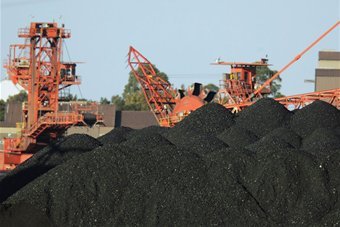 Coal stocks await loading for export in Newcastle.
Photo: A record 114 million tonnes of coal was export from Newcastle in 2011
(Corey Davis: Getty Images)
Coal stocks await loading for export in Newcastle.
Photo: A record 114 million tonnes of coal was export from Newcastle in 2011
(Corey Davis: Getty Images)
.
Newcastle Port Corporation CEO Gary Webb says record coal export figures are due to all stakeholders working together on the Hunter’s coal chain network.
There were record figures for December while the total coal export figure for 2011 was just over 114 million tonnes – up 11 per cent on the previous year.
The trade is worth nearly $13 billion. There were several extended maintenance outages on the coal chain network in 2011, but Mr Webb says they had no impact.
“Those known maintenances are factored in to the modelling that is done for the coal chain,” he said. “And it is just a credit to all the players, the miners, the load points, the above rail operators, ARTC, the terminals and ourselves to make it all fit together.”
Newcastle Port Corporation says there is no doubt coal export records will continue to be broken, as new infrastructure comes on line. Planning is currently underway for Port Waratah Coal Services T4 loader, while mining magnate Nathan Tinkler also wants to build a loader.
Mr Webb says further growth is inevitable. “These records will become regular things,” he said. “The framework provides for the right place for the next terminal. It provides for the certainty for long term contracts to be met and realised. And certainly we will continue to see export records continued to be met calendar year and financial year for the next few years.”
.
[Source: ‘Record coal exports for Hunter’, ABC News, 20120106, ^http://www.abc.net.au/news/2012-01-06/record-coal-exports-for-hunter/3760768].
Australia keeps pushing coal into Loy Yang
.
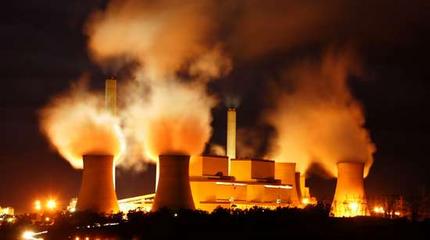 Australia’s 1980’s Loy Yang Coal Power Station
[Source: Photo by Simon O’Dwyer,
^http://www.theage.com.au/news/national/how-big-energy-won-the-climate-battle/2005/07/29/1122144020224.html]
Australia’s 1980’s Loy Yang Coal Power Station
[Source: Photo by Simon O’Dwyer,
^http://www.theage.com.au/news/national/how-big-energy-won-the-climate-battle/2005/07/29/1122144020224.html]
.
The Australian Government continues to encourage operation of Australia’s most polluting coal-fired power station. Worse is that corporate owner AGL pays no tax.
<<More than a decade after first trying to get control of Loy Yang Power Station, AGL has won the prize and is paying just $400 million less than the $3.5 billion enterprise value of the original deal.
Along the way, it has created competition policy history by challenging the Australian Competition & Consumer Commission in court. Yesterday, it finally forced the regulator to admit it had erred in its original rejection of the deal. Politically, its timing is perfect because it gets to collect $240.1m in cash to compensate for the cost of a carbon pricing scheme that Tony Abbott says he will scrap when he gets into government next year.
The $1.1bn carbon permits AGL boss Michael Fraser will collect will be worthless, but then he won’t be paying any tax.
The Loy Yang vehicle is virtually in the hands of its bankers now, which is one reason AGL wants to take full control before its 32 per cent equity stake turns into a millstone around Fraser’s neck.
Joint venture partner, Japanese utility TEPCO, is under government control since last year’s nuclear accident in Japan.
On balance, Fraser can say he has got a good deal, but against the history, this maybe not be quite as good as it first looks.
Certainly, it is not as good a deal as his bankers got when you consider Citibank and Deutsche will collect $8.3m in underwriting fees on a deal with zero risk, being sold at a massive 22 per cent discount on a stock that, for its defensive qualities, will fly out the door.
This must rank as the most expensive call centre in Australia.
Citi picks up another $900,000 for advisory work and just how much the real star of the show, competition lawyers Ashurst, picks up was not disclosed.
The ACCC had blocked the deal because it was worried Australia’s then biggest energy retailer, by controlling 30 per of Victorian coal, would set the scene for mass consolidation.
Barriers to entry created by the vertical integration were, of course, not as the ACCC first imagined, as the Federal Court told the ACCC in 2003 and the market has shown ever since.
The market is now dominated by three integrated suppliers — AGL, Origin and TRUenergy — with a plethora of smaller retail firms and generators headed by Tasmanian Hydro and Snowy Hydro.
While final ACCC clearance was a walk in the park, Fraser has timed his run well, because the next consolidation will be looked at more seriously. This is saying something, when you realise this deal was the result of some five months of negotiation.
Fraser says the deal works out cheaper than the NSW assets it missed out on 18 months ago and cements the company’s place in the Victorian and South Australian market. And he still has plenty of fire power to bid for the next round of NSW privatisations.
Just how the political windfall over the carbon pricing mechanism works remains to be seen. The Opposition Leader has said he will abolish it, but what will be left in its place is the key. Abbott could reduce the confusion by laying down the specifics of his plan.
The carbon tax is, of course, another impost for already stretched consumers, but utility prices will be the main item to increases in price. On government estimates, a $50 shirt will cost 65c more when the scheme starts on July 1, and most shirts are imported, anyway.
Myer has said its costs will rise by only $4.5m on a $1bn cost base. That explains why the retailers should be leading the charge telling consumers the impact won’t be as severe as some fear. Still, consumer sentiment is such that that will be a tough sell.
.
[Source: ‘AGL powers ahead with Loy Yang power station’, by John Durie, The Australian (newspaper), 20120525, ^http://www.theaustralian.com.au/business/opinion/agl-powers-ahead-with-loy-yang-power-station/story-e6frg9io-1226366161045].
Australia’s Bushfire Pollution is out of control
.
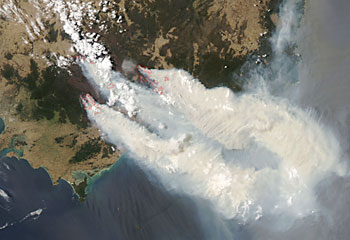 Big impact: The huge plume of smoke from the Victorian fires
as seen from the NASA earth observatory 20070111.
[Source: Herald Sun]
Big impact: The huge plume of smoke from the Victorian fires
as seen from the NASA earth observatory 20070111.
[Source: Herald Sun]
.
Grossly Under-resourced bushfire emergency management sees millions of tonnes of smoke polluting Australia.
2007 (even before the 2009 Bushfires):
.
<<Victoria’s monster bushfires have generated the power of more than 100 atomic bombs and pumped out millions of tonnes of pollution, greenhouse gas and toxic clouds, scientists say.
The tens of million of tonnes of carbon dioxide pumped into the atmosphere by the 1 million ha blaze exceed the combined emissions of the state’s power stations, industry and cars by about 30 percent, according to figures compiled for the Herald Sun online by the CSIRO.
Victoria produced about 7.6 million tonnes of carbon dioxide in the past month from burning coal, petrol and gas; while bushfires raging in the same time pumped out 10.3 million tonnes of carbon dioxide.
CSIRO atmospheric scientist Mick Meyer said the emissions from Victorian fires were about 10 times normal.
The fires also generated 2.5 million tonnes of carbon monoxide; 300,000 tonnes of volatile organic compounds such as (Ed: acetaldehyde), benzene, formaldehyde and hydrocarbons; 85,000 tonnes of methane; 64,000 tonnes of nitrogen oxides; and 59,000 tonnes of smoke, Dr Meyer’s calculations show.
..The (Ed: carbon monoxide), methane and nitrogen oxide emissions would add to global warming with the heat-absorbing gases creating an effect equal to 2.6 million tonnes of carbon dioxide.
“The emissions from bushfires including savannah fires, wildfires and fuel reduction burns account for about 3 to 4 % of Australia’s total greenhouse gas emissions,” Dr Meyer said.
The energy produced by the blazes also dwarfs that produced by humans, according to data provided by the CSIRO and energy agencies.
The fires have burned enough fuel to provide the entire state’s electricity needs for two-and-a-half years, or 125,000 Gigawatt hours, equal to the energy of 112 one-megaton atomic bombs.
CSIRO Fire behaviour expert Justin Leonard said the emission estimates could also vary depending on whether the fires blazed through eucalypt or pine forests, grasslands or scrub, and the thickness of the fuel.
A new study by the Melbourne University, the CSIRO and the national Bushfire Cooperative Research Centre has begun to better gauge the amount of pollutants produced by bushfires.
Country Fire Authority spokesman Ken O’Brien said many people were unaware of the colossal power of an out-of-control bushfire.
“You only have to see a reasonably small fire to realise the amount of energy produced,” Mr O’Brien said.
“But one million hectares being burned is an awful release of power.”
Researchers say the most immediate pollution threat to Victorians came from tiny particles in smoke – with about 59,000 tonnes flung into the atmosphere by the fires.
While comprising just 0.25% of the emissions, the Environment Protection Authority reported last month that the air quality over Melbourne was the worst since records began thirty years ago.
NASA satellites also clearly showed massive plumes of smoke spread as far as New Zealand and Tasmania.
An EPA high smoke advisory for the Latrobe Valley and East Gippsland was still in place late this week as smoke levels there remained up to ten times normal levels.
EPA spokesman John Williamson said the community could expect poor visibility and high levels of air particles from bushfire smoke.
The state’s chief health officer Dr Robert Hall said excessive smoke could aggravate heart or lung conditions including asthma and also trigger respiratory problems in others.
“It is likely that everyone within the community may be affected and they should avoid prolonged or heavy physical activity and stay indoors whenever possible,” he said.
.
[Source: ‘Bushfires’ colossal effect’, by Matthew Schulz, Herald Sun newspaper, 20070112, ^http://www.heraldsun.com.au/archives/old-news-pages/bushfires-colossal-effect/story-e6frf7rx-1111112820872].
2009: Black Saturday Bushfires
.
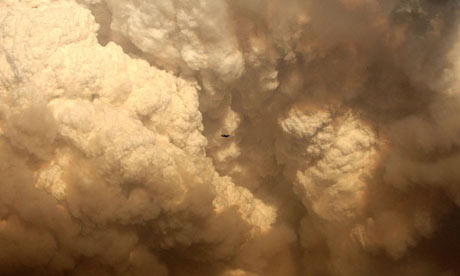 A Boeing 737 (small black object at centre of image) flies by a massive smoke plume over Kinglake
A Boeing 737 (small black object at centre of image) flies by a massive smoke plume over Kinglake[Source: Photo: S. McEvoy/Newspix/Rex Features, Guardian newspaper, Britain, ^http://www.guardian.co.uk/environment/2009/feb/13/carbonemissions-australia]
.
<<The deadly bushfires that have claimed hundreds of lives will also harm the environment as the carbon-rich eucalypt forests release their payload of CO2.
The deadly bush fires in Australia have released millions of tonnes of carbon dioxide into the atmosphere, equivalent to more than a third of the country’s CO2 emissions for a whole year, according to scientists. According to Mark Adams of the University of Sydney. “Once you burn millions of hectares of eucalypt forest, then you are putting into the atmosphere very large amounts of carbon.”
Australia’s total emissions per year are around 330m tonnes of CO2. Adams’s previous research has shown that the bush fires in 2003 and 2006-07 had put up to 105 million tonnes of carbon dioxide into the atmosphere because they burned up land carrying 50 to 80 tonnes of carbon per hectare.
This time, however, the forests being destroyed are even more carbon-rich, with more than 100 tonnes of above-ground carbon per hectare. The affected area is more than twice the size of London and takes in more than 20 towns north of Melbourne, so the CO2 emissions from this year’s disaster could be far larger than previous fires.
“The world’s forests are crucial to the long-term future of the planet as they lock away millions of tonnes of carbon dioxide,” said Robin Webster, a climate campaigner at Friends of the Earth. “More must be done to protect them – deforestation is having a devastating effect and as climate change takes hold, forest fires like those in Australia are likely to become more frequent.”
The carbon dioxide emissions from forest fires are not counted under the agreements made by countries in the Kyoto Protocol, though it is being considered for inclusion in the successor treaty that will be debated later this year in Copenhagen. The usual reasoning behind it was that, with any fires, new growth of vegetation would take up any extra CO2 that had been released. “That is true to a point, but if the long-term fire regime changes – we are now starting to have more fires – we may completely change the carbon balance of the forest,” said Adam.
He added: “All informed scientific opinion suggests that whatever new protocol is signed [at the UN summit] in Copenhagen or elsewhere will include forest carbon, simply because to not do so would be to ignore one of the biggest threats to the global atmospheric pool of carbon dioxide, the release of carbon in fires.”
.
[Source: ‘Australian bushfires pump out millions of tonnes of carbon’, 20090213, (Ed: Victoria’s Black Saturday Bushfires), The Guardian (newspaper), Britain, ^http://www.guardian.co.uk/environment/2009/feb/13/carbonemissions-australia].
2013: Warrumbungle Bushfire (NSW)
.
 Another out-of-control bushfire in Warrumbungle National Park (350km NW of Sydney)
This one a few days ago shown raging towards Australia’s Siding Spring Observatory in the Warrumbungle Ranges.
Photo: NSW Rural Fire Service, 20130113
Another out-of-control bushfire in Warrumbungle National Park (350km NW of Sydney)
This one a few days ago shown raging towards Australia’s Siding Spring Observatory in the Warrumbungle Ranges.
Photo: NSW Rural Fire Service, 20130113
.
This latest bushfire episode has reported over 40,000 hectares of National Park burnt, which is how much CO2?
<<The worst bushfires in NSW for more than a decade have ripped through the state’s north-west, taking 33 homes and destroying 40,000 hectares of land.
More than 80 Rural Fire Service volunteers supported by 18 aircraft spent most of Monday trying to contain the 100-kilometre wide front that burned through the Warrumbungle National Park near Coonabarabran.>>
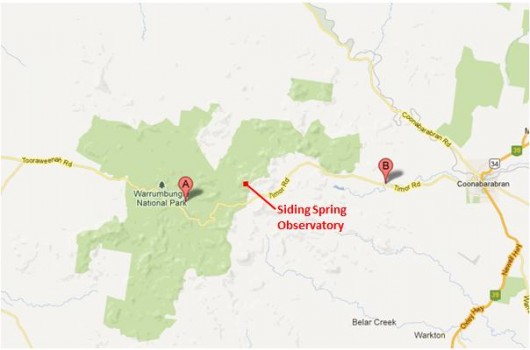 Warrumbungle National Park and Australia’s Premier Observatory
(Source: Google Maps)
Warrumbungle National Park and Australia’s Premier Observatory
(Source: Google Maps)
.
<<About 100 people living in the area were forced to evacuate their homes and the RFS on Monday night said the blaze remained ”a large and dangerous bushfire” that was worse than the Black Christmas fires in 2001.
On Monday night there were 125 bushfires burning in NSW, 30 of which were uncontained.
The acting Premier, Andrew Stoner, described the bushfire season so far as ”a hell of a week” but while milder temperatures helped firefighters on Monday, winds and temperatures were expected to increase by Friday.
The Bureau of Meteorology said most of the state would be in the high 20s to mid-30s with Sydney temperatures rising from 30 degrees on Wednesday to 37 on Friday. Bourke is forecast to be in the high 30s for most of the week, peaking at 40 degrees on Saturday.
As Australia recovers from last week’s record-breaking temperatures, the head of the United Nations Intergovernmental Panel on Climate Change, Rajendra Pachauri, said it was clear heatwaves were occurring more frequently, and would increase further as the planet warms.
”It [last week’s heatwave] could be [a result of climate change], but I wouldn’t draw any conclusions on one single event,” Dr Pachauri said. ”I think you have to take the whole aggregation over a period of time and then come up with the conclusion, which is precisely what we have done.
”They [the findings] are very, very clear. Heatwaves are on the increase, extreme precipitation events are on the increase, and on that there is really no room for doubt any more.”
An RFS spokesman said the Warrumbungle National Park fire had been ”absolutely shocking”.
”At one point there was a smoke plume rising 14 kilometres in the air. The fire was so big and there was so much smoke, it was shocking,” he said.
”It’s still not under control. It’s still burning in the Bugaldie area. It’s been a big effort to get around it.
”The winds, the temperature, the low humidity, just shocking.”
A teacher at Coonabarabran’s high school, Peter Morrissey, nearly lost the family home in the Yerrinan Valley.
”We’re very lucky, but unfortunately that’s not the case for everyone,” he said. ”The home just next door has been burned to the ground, while others have remained untouched.”
Firefighters were able to establish containment lines on a fire about 20 kilometres east of Cooma, in the state’s south. The fire burned through more than 12,000 hectares of bush and grassland.
RFS volunteers have worked for a week now, fighting more than 100 fires across the state. ”They are an amazing bunch of men and women,” the spokesman said. ”They’re buggered but they’re not broken,” he said.>>
.
[Source: ‘Shocking’ bushfire destroys 33 homes’, by Ilya Gridneff and Kristen Amiet, Sydney Morning Herald, 20130115, ^http://www.smh.com.au/nsw/shocking-bushfire-destroys-33-homes-20130114-2cpsx.html].
[Ed: “Shocking” belies a cultural, even inherited colonial mindset of submissive genuflection in the face of Act of God ‘natural disaster.’
.
Such primitive defeatism encourages complacent status quo of those in charge to prevail and with impunity be able to rise above all criticism, just like in the presence of devine aristocracy]
.
 Tasman Peninsula Bushfire January 2013
Tasman Peninsula Bushfire January 2013
.
Ed: Australian uncontrolled Major Bushfires must be releasing more than 100 Hiroshima’s of Carbon Monoxide every year ~ yet culturally no-one raises a questioning eyelid of the slightest concern.
.
